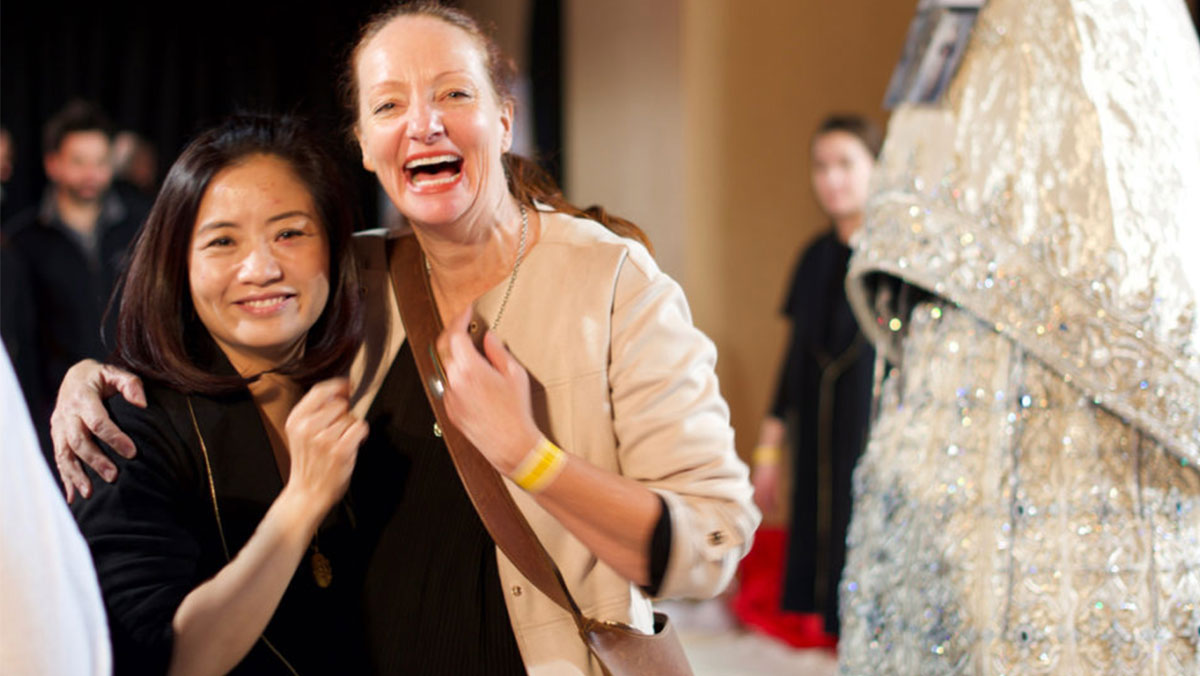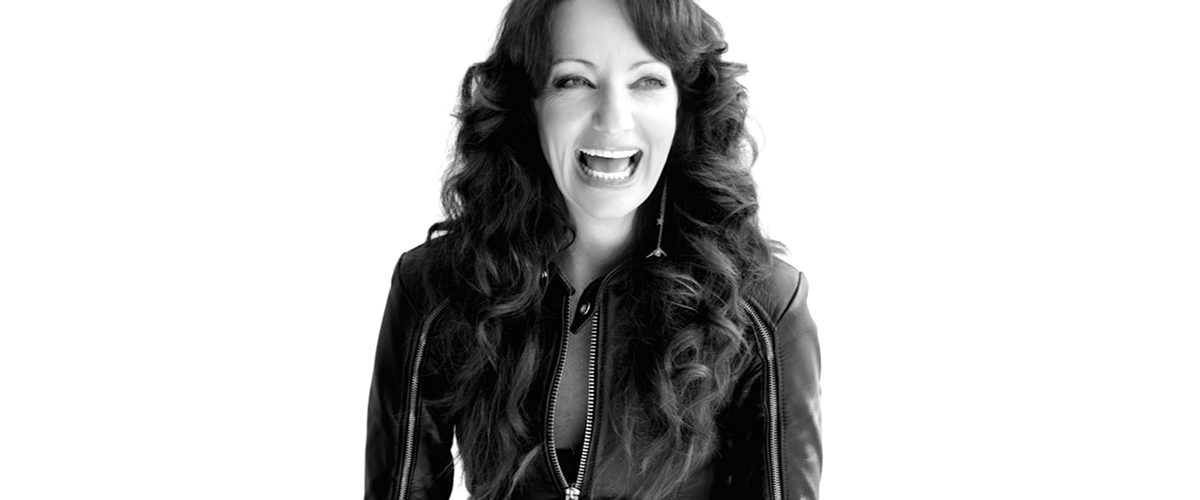Pietra Brettkelly is the New Zealand director/producer behind the multi-award-winning documentaries The Art Star and the Sudanese Twins and A Flickering Truth. For her fifth film, Yellow is Forbidden, Brettkelly delves into the paradoxical world of Guo Pei, a Chinese designer who catapulted into the media in 2015 when Rihanna wore her spectacular canary yellow gown to that year’s Met Gala. Little did Brettkelly know at that stage that Guo Pei was on a journey to enter the exclusive world of Paris’s Chambre Syndicale de la Haute Couture.
I met with Brettkelly ahead of Yellow is Forbidden’s opening at the 2018 NZ International Film Festival to talk about her experience making the beautiful film.
FTV: How did you discover Guo Pei and her story?
Pietra Brettkelly: I’d just finished A Flickering Truth and had spent two years in and out of Afghanistan. The film had been invited to Toronto and Venice Film Festivals (two of the world’s top five film festivals) so I knew I could start thinking about my next project. I wanted to tell a great female story so I began looking through my ideas folder. I remembered seeing an artist who designs a whole world on the heel of a shoe. I thought, ‘This is interesting.” Plus, she lives in China and I think the country is at a really interesting crossroads itself.
I Googled her name and up popped the Rihanna story which had just happened. In this article, and it’s a quote that she says in my film, “I didn’t know who Rihanna was.” All my films are about isolation and that reflects me, that’s the autobiographical element of my films. And I thought it was interesting that she’s such a successful designer in China, she’s in fashion — which is such a pop-culture industry — but she doesn’t know who Rihanna is.
So I found her phone number and called her. The third time I called I spoke to someone who didn’t hang up on me. I was told she was very private and she wouldn’t want a documentary made about her. I said, “Oh, no, I think I’ll come to China to meet her,” and the woman on the phone said, “Oh, no, please don’t do that she’s a very private person.” I got off the phone and called Jack Bryant, a cinematographer that I work with. Three days later we flew to China.
FTV: So it’s about grabbing the moment?
You have to, really. We went straight from the airport to her salon and met with her and her husband Jack for an hour. At the end, I asked if she was interested and she said yes. Jake and I instantly unzipped the bags and started getting out the cameras and she looked at us and said, “Oh, I looked at all those bags and thought you were moving in!” And so we began. We filmed off and on for two years. In that first week, her husband Jack kept telling me “Pietra, the BBC have been on the phone,” or “Pietra, so and so have been on the phone but I tell them we already have somebody.”
Guo Pei is such a beautiful person. She is extraordinary. With her was somewhere I wanted to be for years.
FTV: Was the language barrier an issue?
I’ve made films in Dari, Sudanese, Arabic, Māori to name a few. It is something I look for and welcome — to be enveloped in words and sentences, sounds I don’t know. I don’t have translators, it was just Jake (my cinematographer) and I, so often when we are filming we have no idea what’s going on!
I don’t speak Chinese or Mandarin, neither does Jake. But it’s part of our thing — to read a room and read a situation, go with the flow and try to be as cinema verité as possible. But Guo Pei and I could translate through the We Chat app. She also sometimes had this one woman at her salon and I’d ask her, “What’s going on, we’re hopping in a car, where are we going? We’re flying somewhere, where are we going?”
FTV: When you started filming, did you know Guo was applying to be in the Couture Council?
No. I had no idea. I think I am good at recognising when something is happening. whether it be the zeitgeist or whatever you want to call it. I believe that I cast like a drama director would. I find a great character, I see the context and the setting and I think, “Something is going to happen here.”
With Guo Pei, when I met her I knew there was something. I thought, “You are smart, you are funny, you are witty,” and her beautiful husband Jack was sitting with her, translating and I could see such a gorgeous relationship between the two of them. I thought, “Oh yes, here’s a man supporting a woman for a change.” Plus, the China setting and her beautiful clothes. I knew I had something. So it kind of evolved into a great story that I want to tell.
FTV: Guo Pei is a woman of extraordinary ability and vision. What was it like being with her?
Guo Pei’s ethos is the more women take on, the more we rise up. She doesn’t just put on a frock. There’s a cape then there’s a crown and four-inch shoes and then she’s going to make the models walk on glass and the average runway is 20 meters but ours will be 100 metres. She never thinks anything is impossible.
She has so much going on; she designs over 2000 outfits a year for her clients, then up to 25 pieces for Haute Couture, then she was also designing for a trilogy of films. We met in Europe with shoe designers as she is planning a line of shoes. Then she was looking into fabrics and home furnishings. She was also approached by a luxury car brand to do something.
During all these meetings we had no idea what was going on and would look around the room thinking, “Someone here will speak English!” Guo Pei and Jack had so much going on, we just rolled with it. I have so much material, I could make a whole other film. Every moment she’s thinking, designing. She goes to what she calls her happy place when she’s designing. You can see it, a smile comes over her face.
She doesn’t sell her couture pieces, she keeps every single one. She doesn’t loan them out, either. That’s why loaning it to Rihanna was such a big deal. She had to meet her first. One day she said to me, “Pietra, someone called Beyoncé has been in touch,” and I said,”Even I know Beyoncé!” She’d turn them all down, including Lady Gaga. That’s not where she wants to go.
She had to train all her 300 staff in a skill that had been lost. In fact, one of the women in her teams, her great-grandmother was one of the lead embroiderers in the last emperor’s court. But the generation in between experienced the cultural revolution and there was the crushing of those traditional crafts.

FTV: Guo Pei invited you into her life for an undetermined amount of time, so there’s an obvious trust and rapport between you.
It’s really really humbling. And it rocks me every time one of my subjects says yes because I’d never do it. I’d never let someone like me make a film about me! Never! It’s an incredible trust that they give me. With Guo Pei, the trust was as women but also as creatives. She never stopped me from filming, she just let me do whatever. When I had footage translated I’d hear people whispering, “Who are they?” and she’d reply, “Oh, don’t worry about them, they are with me.” She encouraged others to trust me.
FTV: There’s a beautiful scene in the film where we are introduced to Guo Pei’s parents and we begin to get more of an understanding of where her skill comes from.
Her mother had never let anyone take her photograph, so Guo Pei couldn’t believe it when she let us film her! That was a year into filming. It was quite an epiphany that day; my whole thing was trying to understand the mind of this creative and that day it was a lightbulb moment when I realised Guo Pei is the result of a perfect wave. She has a soldier father who has artistic talent. Then the grandmother who brought her up would whisper stories to her about the court of the last Emperor — about what they wore, the sound of the silks and the touch of the fabrics and the embroidery. She had a blind mother who needed her — Guo Pei’s first memory is threading a needle for her mother.
She was born during the cultural revolution, so there was repression, this cloistered existence that she had growing up. I don’t believe isolation is necessarily a bad thing, I think sometimes a purity of vision comes from that, and she is an example of that. The first time she saw other haute couture clothes up close is when we went to the Lanvin exhibition (which is in the film) and you can see her, she’s right up close counting the stitches, she’s only ever seen it in books or magazines.
FTV: How do you think that impacted her?
I think her thoughts are so much purer than if she’d been educated at a western art school or going to the museums every Sunday in a European capital. She has really evolved her own style. She’s also drawing on the remarkable history of China, on the 5,000 years of design, colour, embroidery, silk.
At the start of the film, she tells the group, “I’m just one person, I’m not a nation,” but really, she is. I know at times she felt the weight of the international perception of China, that it was all knock-offs and plastic toys and fake this and that. Yet she’s coming out with a different aesthetic altogether. So she does represent the country, as much as she insists otherwise. She does by virtue of being the first.
Yellow is Forbidden is being screened as part of the NZ International Film Festival. For the full schedule and ticket information, visit the NZIFF website. Watch the trailer above.







